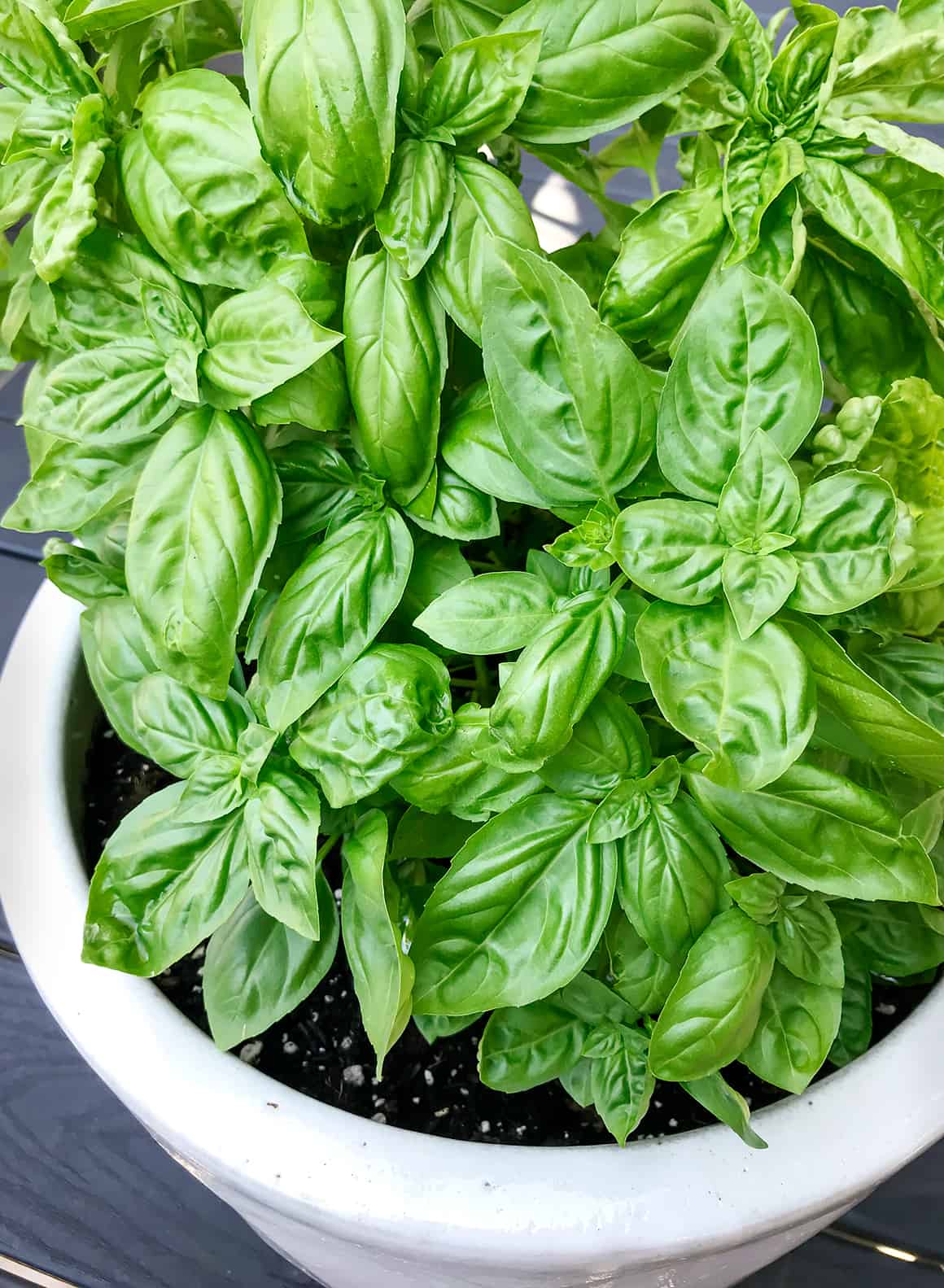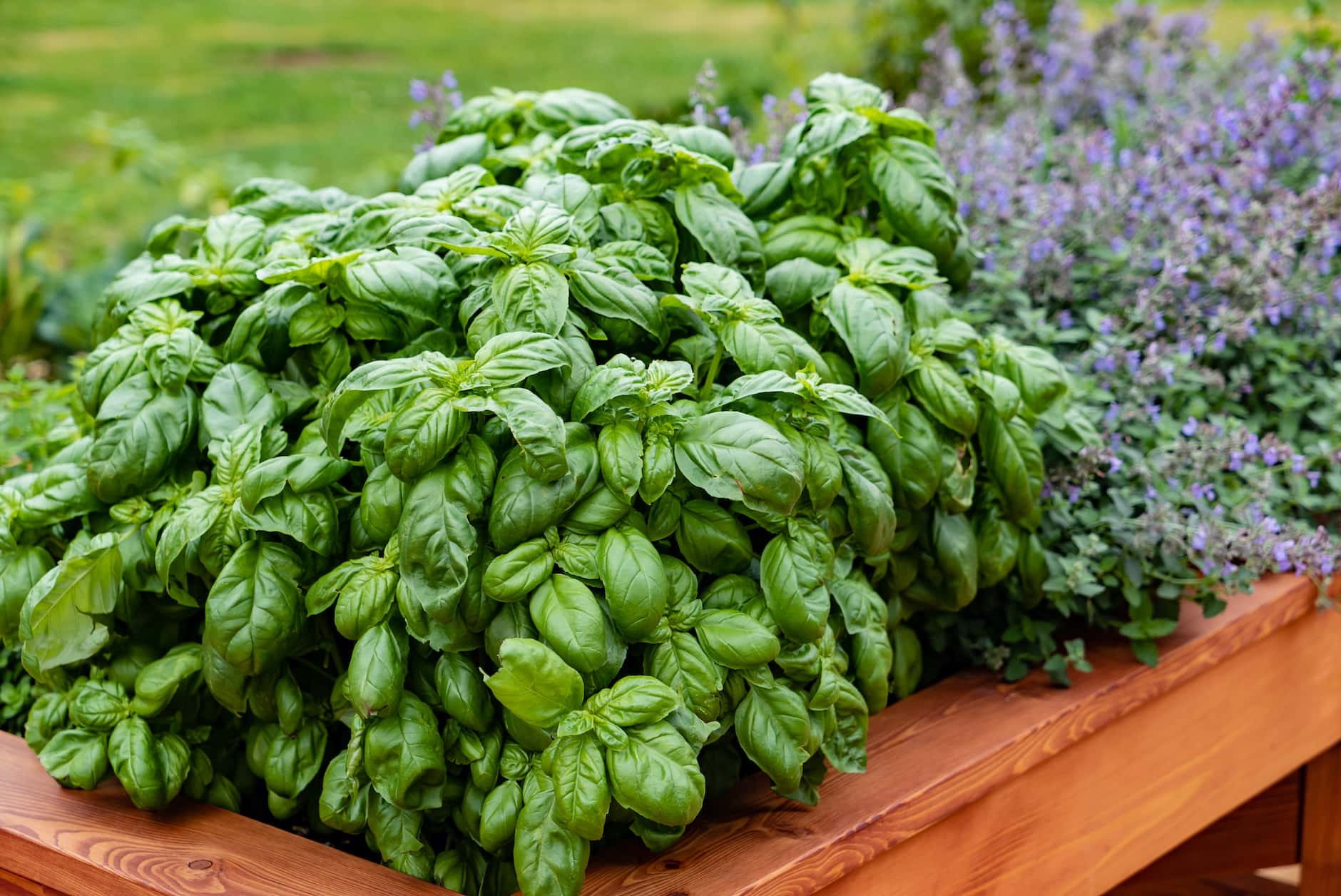Ocimum basilicum, also known as basil, is a well-known spice plant that can enhance practically any cuisine. This plant is native to warm regions of India, despite being frequently linked to Italian food. From there, it moved over the globe and developed into one of the essential spices in practically every kitchen.
The intensely fragrant leaves come in a wide range of fragrances, including cinnamon, licorice, and scents like sweet basil or mild lemon. Rich green to deep purple are the colors of the leaves, which can be smooth or crinkly.
Despite being a perennial in nature, basil is typically planted as an annual garden crop that perishes with the first fall frost. Its life cycle lasts between six and eight months, depending on the climate. However, this plant can be cultivated as a perennial in the garden outside in US climate zones 10 and 11.
In other regions, growing the plant inside in pots shielded from freezing temperatures is the only method to keep it for more than one season.
Table of Contents
Why does basil die at the end of the season?
Plants like basil have rapid growth cycles. In other words, the plant goes from seed germination in March to a mature plant that is prepared to produce seeds and new plants in June and July in just seven or eight months.
Basil plants are cold-sensitive because they are native to warm climates of eternal summer. This plant is negatively impacted by the combination of the fall’s low temperatures and the day’s natural shortening.
After flowering and seed production, the plant enters a phase of complete dormancy in warmer climates. All physiological processes will be reduced and the majority of the leaves will wither and fall off, but the plant’s root system will continue to live and store energy for when the weather warms up and the days lengthen in the spring.
Growing basil indoors

Basil comes in around 60 different varieties. Some of them, like sweet basil, are tall shrubby plants that can reach heights of two to three feet or more.
Such species should not be grown in pots; instead, it is much simpler to cultivate them outdoors, where they will have ample room for expansion and development.
It is significantly simpler to grow dwarf species indoors, such the Dwarf Greek, which only grows 5 to 6 inches. They can be grown in a tiny pot on a kitchen window ledge and won’t take up much room.
How to grow basil from seed?
Poppy seeds and basil seeds are similar in size and appearance. They quickly sprout, so even for complete newbies it typically works. Here are some quick tips for growing:
- Deeply plant the seeds, then cover them with a thin layer of dirt. When daily temperatures hit 65 degrees Fahrenheit, the optimal time to sow is in the spring or early summer.
- After the initial watering, wrap plastic wrap around the growth container or cup.
- As soon as green sprouts start to grow, usually after 8 to 10 days, remove the foil. Continue to gently water each day,
- The plant will develop its first lateral branches over the following month. To promote fresh branching, it is time to remove the tops of the plants.
- You can begin plucking the leaves in mid-May, when they reach their full size. Regularly tear off the tips. Cutting the plant’s tips will encourage the growth of new leaves. The growing season is extended and the plant’s blossoming is postponed. Basil plants kept indoors are frequently active weeks after their counterparts in the garden are affected by frost because they are protected from the cold.
Do basil plants die after flowering?
The appearance of flower buds marks the beginning of the plant’s next stage of growth, which includes flowering and seed generation. It does not indicate the end of the plant; rather, it indicates that the plant has matured to the point that it can produce seeds, completing the seasonal cycle.
The plant concentrates the majority of its energy during this time on growing blooms and very few leaves.
The first flower buds on basil that was planted in March will appear towards the end of May or the start of June. During the hottest months of summer, the blooms will continue to bloom for the following two months.
The plant will be tricked if the flower buds are torn off, and the leaf growth phase will be prolonged. Rather than flowers, the plant will instead generate new, fragrant, aromatic leaves that are rich in priceless essential oils.
What to do with the basil flowers?
The produced flowers can also be cut, which will promote fresh growth. In theory, trimming basil is a suggested preventative measure to help the plant grow a more compact and green form.
Additionally, the cut flowers have an aroma that is somewhat mellower and comparable to that of the leaves alone. The blossoms are edible as well, so you can either add individual little white flowers to a salad or arrange the stalks in a vase to enjoy their lovely smell.
The yearly growing season comes to a close when pollinated flowers produce seeds. The plant will then intermittently produce a small number of new leaves before, depending on how you care for it, either dying or going into dormancy.
Potted basil – anual or perrenial?
Even as a pot plant, basil is much more frequently grown as a seasonal plant due to the abundance of seeds and the high germination rate.
The majority of gardeners will concur that caring for existing plants until the start of the new growing season is easier than starting new plants in the spring. However, if you can fulfill the requirements given below, it’s not impossible.
- Reduce the height of your basil plant by about one-third in the fall.
- Select the plant’s brightest location possible. The consequences of dormancy will be diminished and new growth will be stimulated. In some cases, having artificial illumination close to the plant is a smart idea. It needs at least 6 to 8 hours of good lighting per day to keep growing.
- Keep the temperature in the room between 55 to 70 F.
- To stop the roots from freezing if you keep the plant on a window sill, cover the pot with a cloth.
- Depending on the plant’s requirements, water it. Do not overwater during this time if only a few leaves start to appear. If there aren’t enough leaves, water will unnecessarily accumulate around the plant root, which could lead to root rot. The leaves are the organs through which water leaves the plant.
- The plant will produce more leaves when the environment is favourable. You could still use these leaves as a fresh spice for food even though they are typically paler and lack a strong aroma.
- Keep from tearing a lot of leaves at once during this time. At least one-third should stay attached to the plant. Take only leaves that have grown to their maximum size as well.
Conclusion

The central and lateral stems will start to turn woody after the first year, and with each passing season, the flavor’s intensity will wane. Basil is grown as an annual for a reason, after all, don’t you think?
